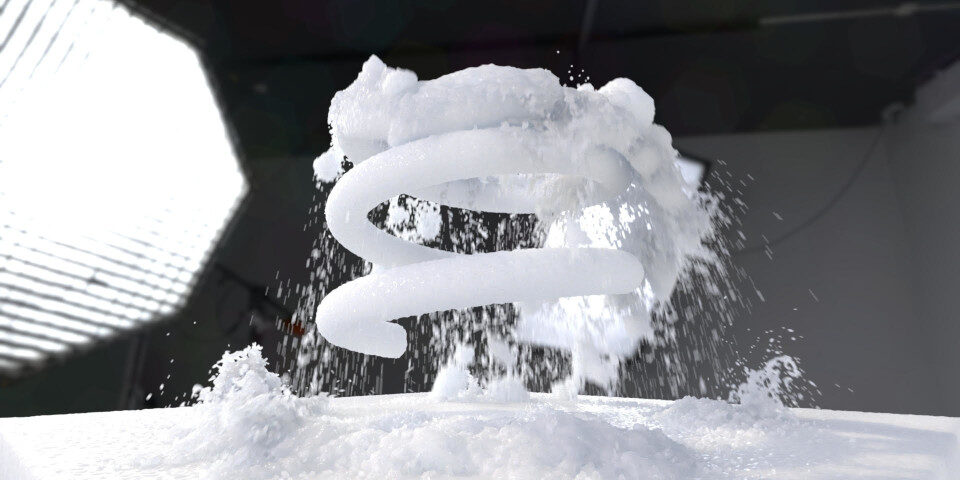Autodesk open-sources Bifrost USD
Autodesk’s original launch trailer for Bifrost USD, its system for creating and editing USD scenes using the node graph from Bifrost, its multiphysics plugin for Maya. Bifrost USD is now available open-source.
Autodesk has open-sourced Bifrost USD, its toolset for creating and editing USD scene graphs using the graph editor from the Bifrost multiphysics plugin for Maya, its 3D modelling and animation software.
The release coincides with that of Bifrost 2.6, the new version of the plugin itself, which stays closed-source.
New features in Bifrost 2.6 include support for collider stickiness in the plugin’s MPM granular fluid solver, new diagnostic tools for the Aero gaseous fluid solver, plus workflow and performance improvements.
A powerful node-based simulation environment with a range of physics solvers
First released in 2019, Bifrost for Maya provides a node-based visual programming enviroment in which technical artists can author multiphysics simulations.
The plugin, an expanded version of Maya’s original Bifrost Fluids simulation toolset, includes solvers for combustion, granular materials and cloth as well as liquids, and is available free with Maya.
New in Bifrost 2.6: Bifrost USD now available open-source
The headline change in Bifrost 2.6 is that Bifrost USD is now open-source.
First released alongside Maya 2023 earlier this year, the toolset lets technical artists create and edit USD scene graphs procedurally using the Bifrost graph editor.
It is intended for use in VFX and animation pipelines based around the Universal Scene Description format, and makes it possible to populate a USD stage with layers and prims by wiring together nodes in the graph.
Open-sourcing Bifrost USD brings it into line with USD for Maya, the USD extension for Maya itself, and Arnold USD, for Autodesk’s Arnold renderer, both of which were always open-source.
Autodesk told us that the change had been requested by “multiple customers”, and would enable studios to build the software using the specific version of USD required in their production pipelines.
As with USD for Maya and Arnold USD, Autodesk intends to continue developing Bifrost USD – it isn’t simply handing off the task to its users – although “external contributions will be welcome”.

Updates to the MPM and Aero solvers
New features in the Bifrost plugin itself include support for collider stickiness and per-particle activation in the MPM (Material Point Method) solver, used to simulate granular fluids like sand and snow.
Stickiness provides greater artistic control over simulations such as a snowball hitting a wall and some of the snow sticking to the wall afterwards.
Activation can be used for disintegration effects by activating particles using visual programming, as well as position-based activation for effects such as footstep simulations.
Aero, Bifrost’s gaseous fluid solver, gets a new set of diagnostics tools along the lines of those already available in the MPM solver, for visualising simulation data like velocities and temperatures.
Workflow and performance improvements
Workflow improvements include an overhaul of Bifrost’s backdrops system, previously used both to organise graphs by grouping nodes into colour-coded regions, and to annotate the graph.
Annotation has now been split out into a separate system, Sticky Notes.
It is also now possible to add widgets like sliders and colour pickers to compounds – reusable sections of a Bifrost graph – via the UI, without the need to edit JSON.
Other changes include a one-click solution for converting Bifrost data into a Maya mesh, without the need to set up the bifrostGeoToMaya node manually, and improvements to nodes reading and writing Alembic files.
In addition, improvements to low-overhead evaluation mean that graphs whose only inputs and outputs are numeric values or light geometry like curves – such as those for animation rigs – now run faster.
According to Autodesk, one graph ran “30 times faster” in its own tests.
Pricing and availability
Source code for Bifrost USD is available under an Apache 2.0 licence.
Bifrost for Maya 2.6 is compatible with Maya 2020+ running on Windows, Linux and macOS, and with USD for Maya 0.20 and MtoA 5.2.2.1. It is available as part of a subscription to Maya.
Maya itself is available for Windows 10+, RHEL/CentOS 7.6-7.9 or 8.5 and Rocky Linux 8.5, and macOS 10.14+. The software is rental-only. Subscriptions cost $225/month or $1,785/year.
Read a full list of new features in Bifrost for Maya 2.6 in the online release notes
